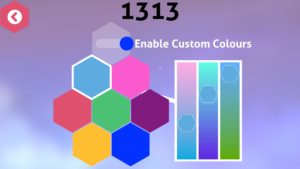I’m building an iOS app that will need a web service for the data management. I’ve looked at Firebase and CloudKit. Both are very good options but they are not going to quite fit my need with this project.
Normally, I would roll my own backend using PHP and MySQL. They are both quite familiar to me and I’ve built a number of my own frameworks to make my life easier with them. But… this is also a very good time to lift my head up and see what else is on the terrain.
Building a Perfect Swift Server Starter with SSL App
Download Acronym Project from GitHub
When Apple announced that Swift is open source, that was very exciting to me. I enjoy the language and with more people participating in its development, the quicker and the cooler the improvements would come. Swift 3 was a big change, as reflected in all the little things I had to fix in my code to migrate it from 2 to 3. But, Swift 3 seems to represent a major milestone in the language development.
In looking for back end solutions, I also looked at what was happening with Swift on the server. I found Ryan Collins post on medium.com, “Current Features & Benefits of the Top Server-Side Swift Frameworks,” very helpful. Where Perfect shines is important to me and where Perfect falls short isn’t that important to me. So I picked Perfect to examine further.
After perfect.org, my first stop was Ray Wenderlich with the great set of tutorials for Perfect.
I have a ubuntu 16.04 server that I’ve been using for Node.js and APNs. It wasn’t very hard to get going on the server. Follow the instructions found on their Getting Started page. Of course, you’ll need to also install swift. There is an script you can get from Perfect-Ubuntu or you can go Download Swift from swift.org.
The Perfect Assistant is super handy. Make sure you download/install that.
But, before you get too far down the road, get the PerfectTemplate running on your Mac and on your Ubuntu server. Once that’s running properly, we can move on to the next steps.
The next steps consist of building a basis for MySQL StORM then getting and using a certificate for https.
Ray Wenderlich’s tutorial videos talks about using PostgreSQL for its database backing for StORM. I’m wanting to use MySQL. Swapping MySQLStORM for PostgresStORM is trivial. Watch the whole series from Ray Wenderlich. The videos are short and informative.
In main.swift of my Acronym project, you can see that I’m not putting everything into main. I’m placing routes into controllers that conform to a ControllerProtocol. Database access is also separated out into an ORM object and an API class. It’s a step towards more SOLID coding.
You will also notice that I’m using a class called Environment (for the lack of a better name). Environment has a static variable isXcode that is true #if Xcode. Based on that variable, I return different values for things like serverPort. I’m also initializing the MySQLConnector in a static func in Environment. How to setup a MySQL database on your server is something I’m not going to cover here.
In Environment, you’ll also see that the serverName is returned as “sub.your-comain.com” — this will need to be updated to your actual domain.
Out of the box, Acronym will start the server on port 80 on Linux. It also will serve static files out of ./webroot with the FilesController. This is important to get the LetsEncrypt Certbot installed. Read the excellent post by Jonathan Guthrie titled Easily Secure your Perfect Server Side Swift code with HTTPS for instructions on how to install the LetsEncrypt Certbot.
The first step is to install certbot with the following:
sudo add-apt-repository ppa:certbot/certbot
sudo apt-get update
sudo apt-get install certbot
Because the Acronym app is serving up static pages out of ./webroot, when you run the following command, the certbot will be able to confirm your website by adding and removing some data in a specific path in ./webroot.
sudo certbot certonly --webroot -w /the/path/to/Acronym/webroot/ -d sub.your-domain.com
A couple notes here: 1) replace /the/path/to/Acronym/webroot/ with the actual path, and 2) replace sub.your-domain.com with your actual domain.
If all works well, you will see out put that ends with something like:
...
Creating CSR: /etc/letsencrypt/csr/0000_csr-certbot.pem
IMPORTANT NOTES:
- Congratulations! Your certificate and chain have been saved at
/etc/letsencrypt/live/test.mydomain.com/fullchain.pem. Your cert
will expire on 2017–09–18. To obtain a new or tweaked version of
this certificate in the future, simply run certbot again. To
non-interactively renew *all* of your certificates, run “certbot
renew”
Success! Now to you just need to do a couple things in Environment.swift to get Acronym to run on port 443.
- Have the serverPort method return 443 when !self.isXcode.
- Check that the keyPath string in the tls method is the same as what was stated after the “Creating CSR” above.
Now you can rebuild Acronym and launch it. When you direct your browser to https://sub.your-domain.com, you should see the little closed lock showing up!

